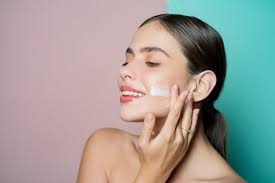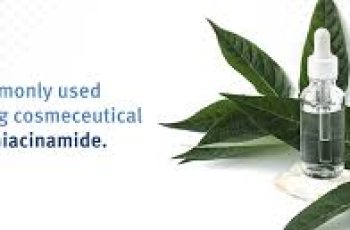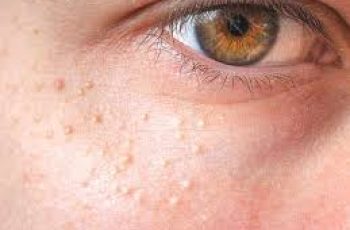
Can you Layer Vitamin C with Azelaic Acid?
You probably understand what vitamin C is already, but the lesser-known benefits of azelaic acid are often overlooked. In recent years there has been a surge in this clever, multi-functioning acid, often occurring in various formulas as the main active ingredient. Chances are you could already be benefiting from it without even realising.
So, let’s find out more together and see whether you can layer vitamin C with azelaic acid! Don’t forget if you have any skincare questions you can follow Procoal’s Instagram.
What is Azelaic Acid?
Found naturally occurring in grains such as barley and wheat, it has since been formulated synthetically making it stable and easy to be added into skincare products. Often mistaken as a member of the AHA and BHA family, azelaic acid is a class of medications known as dicarboxylic acids. Originally formulated into topical skincare products to help combat acne and rosacea. Rich in antibacterial properties with the ability to chemically exfoliate the skin, it can target build-up of dead skin cells, spots, blackheads, and other breakouts.
It also combats signs of hyperpigmentation, dark spots and post acne scarring all whilst remaining gentle enough to calm rosacea and redness to the skin with its impressive anti-inflammatory benefits. Wanting to find out more? Check out our Skin School post about azelaic acid for more information.
What is Vitamin C?
Not just in your morning orange juice, vitamin C is one of the most loved and used skincare ingredients. Packed with antioxidants you can combat daily exposure to free radicals, such as UV damage and pollution. With its potent ability to neutralise the damage you’ll find that vitamin C can combat fine lines and wrinkles as well as targeting dark spots and hyperpigmentation, leaving you with a healthy glow resulting in an even looking complexion. There is a fully dedicated blog post about the full benefits of vitamin C, so do check it out.
So, now you have had a refresher about the benefits of these two powerhouse ingredients, let’s dive right in and find out more about layering them together.
Can you layer vitamin C with azelaic acid?
The short answer is yes, both azelaic acid and vitamin C are packed with antioxidant and skin benefiting properties that help to promote an even complexion with fine lines and wrinkles notably reduced. I would advise using these ingredients with caution, especially if you have a skin type that is dry or prone to sensitivity.
It may take some time for your skin to become accustomed to layering both ingredients in your daily routine. To build your skin’s tolerance I suggest applying vitamin C during your morning routine and saving azelaic acid for the evening. This will ensure you reap the rewards whilst avoiding any unwanted reactions, irritation, or discomfort. There’s more about this topic on The Beauty Insiders Blog, so click here to find out more.
What can you layer with azelaic acid?
Luckily for us all azelaic acid is a relatively easy acid to add into our daily routines. You may even find that is versatile enough to team together with other active ingredients, including acids. Here are some examples of which ingredients you can layer with azelaic acid.
Azelaic Acid and Niacinamide
By teaming these two ingredients together you’ll find the overall look and health of the skin is improved. Inflammations are reduced, signs of congestion are improved and there is noticeable difference in post-acne scarring and dark spots. Both azelaic acid and niacinamide work on the outer surface of the skin, with niacinamide locking moisture into the protective barrier keeping it at its healthiest, fully functioning state.
Azelaic Acid and AHAs BHAs
Although it may feel that teaming azelaic acid and AHAs or BHAs would be a recipe for disaster but are in fact perfectly safe to use. Azelaic acid remains gentle enough to not disrupt the skin barrier or cause dryness. Having said that, it is best to keep an eye on the other, more potent acids you apply to the skin as overusing them can result in severe dryness, redness, and flare-up in acne. For an easy and effective routine alternate the days you use products containing AHAs, such as glycolic acid and BHAs, like salicylic acid.
Azelaic Acid and Vitamin C
Teaming these two potent ingredients together is a simple task. Both enriched in antioxidants they can complement each other and work at reviving the skin, repairing damage, and protecting the outer barrier on a daily basis. As I have already mentioned, to avoid any unwanted reactions it is best to alternate the times you use each ingredient in your regime.
There are three examples of the best ingredients you can layer with azelaic acid. Considering other popular skincare ingredients, I would suggest seeking the advice of a doctor, dermatologist or trained, medical professional before introducing anything new into your daily regime.
What’s better azelaic acid or vitamin C?
If I was forces to choose which skin ingredient is better between vitamin C and azelaic acid, I would say vitamin C. This is because between the two, vitamin C is naturally occurring on the skin. With both ingredients containing such an impressive array of skin benefits, it is perfectly safe to use them together.
If both ingredients are new to your routine, I would suggest performing a patch test for 24 hours beforehand will prevent any irritation. To perform a patch test, apply a 10p size amount of your skincare product on the inside of your forearm and leave it overnight. If by the morning you have not experienced any flare-up or irritation, then you have the green light to apply it to your face.
Can you layer acids and vitamin C?
Yes, you can, but it can take some time to master the most effective method. Here are a couple of options you try.
Option One: Use Vitamin C and AHAs/BHAs at different times
This is the best option for those with an extremely dry and sensitive skin type. By applying the acids and vitamin C at different times will ensure you reap the rewards without the worry of causing irritation or disruption to the skin barrier. You will also find that applying these ingredients at different parts of the day allows you to regulate the pH level of the natural protective barrier. This is important as it will combat the risk of the skin surface becoming weakened and citable to damage because of exposure to free radicals.
Option Two: Layering Vitamin C and AHAs/BHAs Together
When used correctly, layering acids with vitamin C can be an effective duo. You must keep in mind however that building your skin’s tolerance will have an impact on how each ingredient delivers the best results. If you are wanting to find out more about what not to mix with vitamin C, check out the dedicated blog post.
I hope that this has cleared up some confusion about whether you can layer vitamin C with azelaic acid. It won’t take long before you are amazed with the results you’ll see.


